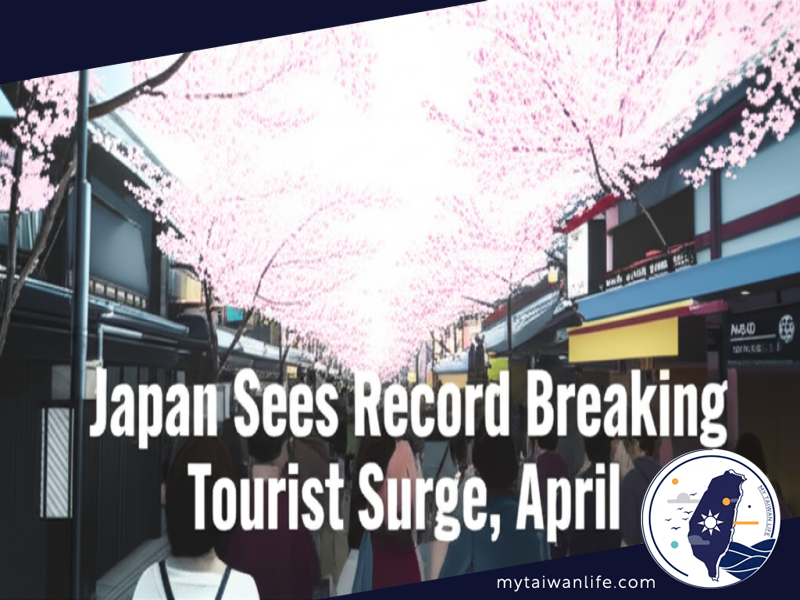Japan Sees Record-Breaking Tourist Surge in April
Spring blossoms and a weak yen fuel unprecedented visitor numbers, challenging the nation's tourism infrastructure.

TOKYO: Foreign visitor arrivals to Japan surged by 28.5 percent year-on-year in April, reaching a record 3.91 million, according to official data released on Wednesday (May 21).
The Japan National Tourism Organization attributed the surge to the spring cherry blossom season, which boosted demand across numerous markets. The Easter holidays also contributed to increased travel demand from Asian countries, Europe, the US, and Australia.
This total surpasses the previous record of 3.78 million set in January 2025, marking the highest single-month figure ever recorded and the first month to exceed 3.9 million visitors.
For the first four months of the year, the total reached 14.4 million, reflecting a 24.5 percent increase.
A weak yen has significantly contributed to this tourism boom. Japan saw approximately 36.8 million arrivals last year, as reported in January's national tourism figures.
The Japanese government has set an ambitious target of nearly doubling tourist numbers to 60 million annually by 2030. Authorities aim to distribute visitors more evenly across the country to alleviate congestion at popular attractions, particularly during peak seasons like the cherry blossom viewing and autumn foliage periods.
However, as seen in other popular tourist destinations like Venice, there's been a rising pushback from residents, especially in cities like Kyoto, the ancient capital known for its geisha and crowded Buddhist temples. Authorities are also implementing measures to manage the influx of visitors, such as charging climbers on Mount Fuji to mitigate overcrowding.
Last year, measures were put in place to manage overcrowding, including briefly erecting barriers outside a convenience store on Mount Fuji to prevent people from obstructing traffic while taking photos of the mountain. Business travelers in cities such as Tokyo have also expressed concerns about higher hotel prices due to high tourist demand.
The surge in tourism has also had other effects. The increased consumption of sushi and onigiri has been pointed as a factor in shortages and price increases for rice, creating challenges for the government.
This year, the Japanese Meteorological Agency (JMA) declared the "somei yoshino" cherry trees in full bloom in Tokyo on March 30. While this year's blooming dates were around average, the JMA notes that climate change and the urban heat-island effect are causing the sakura to flower approximately 1.2 days earlier every 10 years.
Katsuhiro Miyamoto, professor emeritus at Kansai University, estimated the economic impact of cherry blossom season in Japan at 1.1 trillion yen (US$7.3 billion) this year, a significant increase from 616 billion yen in 2023, illustrating the economic significance of the tourism boom.
Other Versions
Japón bate su récord de turistas en abril
Le Japon enregistre une hausse record du nombre de touristes en avril
Jepang Mengalami Lonjakan Wisatawan yang Mencapai Rekor di Bulan April
Il Giappone registra un'impennata turistica da record in aprile
日本、4月に記録的な観光客急増
일본, 4월에 기록적인 관광객 급증세 기록
Nakakabaliw na Pagdagsa ng mga Turista sa Japan noong Abril
Рекордный рост числа туристов в Японии в апреле
ญี่ปุ่นพบนักท่องเที่ยวพุ่งสูงสุดเป็นประวัติการณ์ในเดือนเมษายน
Nhật Bản Chứng Kiến Lượng Khách Du Lịch Tăng Vọt Kỷ Lục vào Tháng Tư

